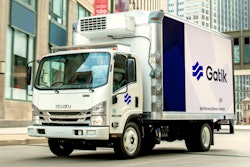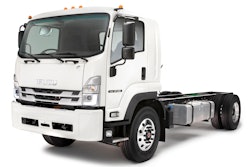
In a year of stay-at-home orders and social distancing guidelines, the world was presented with a number of critical challenges that no one saw coming.
One of many interesting new developments that can’t be ignored is that while people sheltered in place, they turned to eCommerce to acquire groceries, toilet paper, over-the-counter medicine and other essential items. Instead of lining up in stores, many queued up online, waiting for the next available shipment of disinfectant wipes.
This propelled eCommerce more than 32% year-over-year, achieving sales in excess of $794 billion in 2020. This is nearly double the original projected growth rate of 18%, which still would have represented a sizable increase over the previous year.
As more consumers turned to eCommerce for safety and convenience, its heightened popularity put a strain on the trucking industry, with truck drivers being tasked to deliver more goods at a faster rate.
While that speed may be necessary in order to keep up with consumer needs and expectations, it also poses a greater risk for getting injured on the job and accelerates the need to recruit and retain top talent.
Organizations should do everything in their power to reduce that risk, which not only serves employees but also helps businesses as well by maintaining operations, by keeping the most capable employees working, and by avoiding preventable compensation claims.
If delivery personnel are to remain safe and avoid injury during these unprecedented times, trucking companies must ensure their team members have the knowledge and skills necessary to move in strong, safe positions without slowing them down.
Speed can come at a cost, but there is a solution
Given the incredible diversity of today’s workforce – which consists of people who vary in age and physical ability – it is important to come up with a personalized movement training regimen.
Instead of thinking in traditional terms, consider how the human body should operate while in motion. If team members don’t know how to properly move their bodies to decrease the likelihood of injury, and they are moving quickly, mistakes, injury, and loss in productivity could follow.
However, with the right movement training, team members can build injury prevention skills quickly, allowing them to foster the right muscle memory in order to default into strong, safe positions while they are moving quickly. Over time, they will be able to move faster and faster while maintaining these strong positions.
The best way to move is to always move well
Some may believe that they must invest a significant amount of time when training workers about the physical dangers of moving quickly with improper form.
The solution is to focus on moving well all the time, which takes much less effort while reinforcing strong muscle memory so that workers naturally default into the best positions. It can also prevent them from making thousands of small mistakes that, over time, may add up to nagging pain and repetitive motion injuries.
That means whether workers are picking a pen up off the floor, moving their first case of product that day or making the 60th delivery of their route, their lift should be perfect.
By investing in that training early, organizations can ensure that their team members are able to handle the speed when necessary. This is essential to their short- and long-term success, particularly when onboarding new hires, but it can also assist in efforts to boost employee retention.
Safe and healthy employees are happy employees, and happy employees are less likely to quit. Thus, the sooner businesses deploy the right movement training, the sooner they can position their most capable team members to be there during peak seasons.
Understand what strong and weak positions look like
Any worker can experience fatigue, and that can lead to injury. All injuries are bad but back injuries are especially problematic, so it is important for team members to learn how to protect their back. In order to take corrective action, however, they must also be able to recognize when they are working in ways that are more likely to cause injury.
Thus, it is important for team members to be trained to prioritize protecting their spine. They should understand what strong and weak positions look like. They should also be equipped with a technique for bracing their spine that they can practice and apply to any situation they come up against.
Continue working while remaining safe
The demand for eCommerce is significant – and of course only increased over the past year – but that doesn't mean that worker health should fall by the wayside.
On the contrary, now is the time to dig in and improve the health and safety of frontline workers everywhere. With social distancing guidelines and other restrictions in place, organizations can use mobile technology to provide their workers with daily learning modules that highlight key safety practices.
As with any physical profession, there is always going to be the possibility of injury. However, by practicing daily safety training, frontline workers are better positioned to prevent these injuries – even in the demanding world of eCommerce.
John Leo Post is the co-founder and vice president of product at Worklete, a developer of enterprise SaaS products designed to reduce injuries and associated costs in labor-intensive industries.











